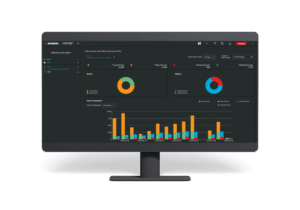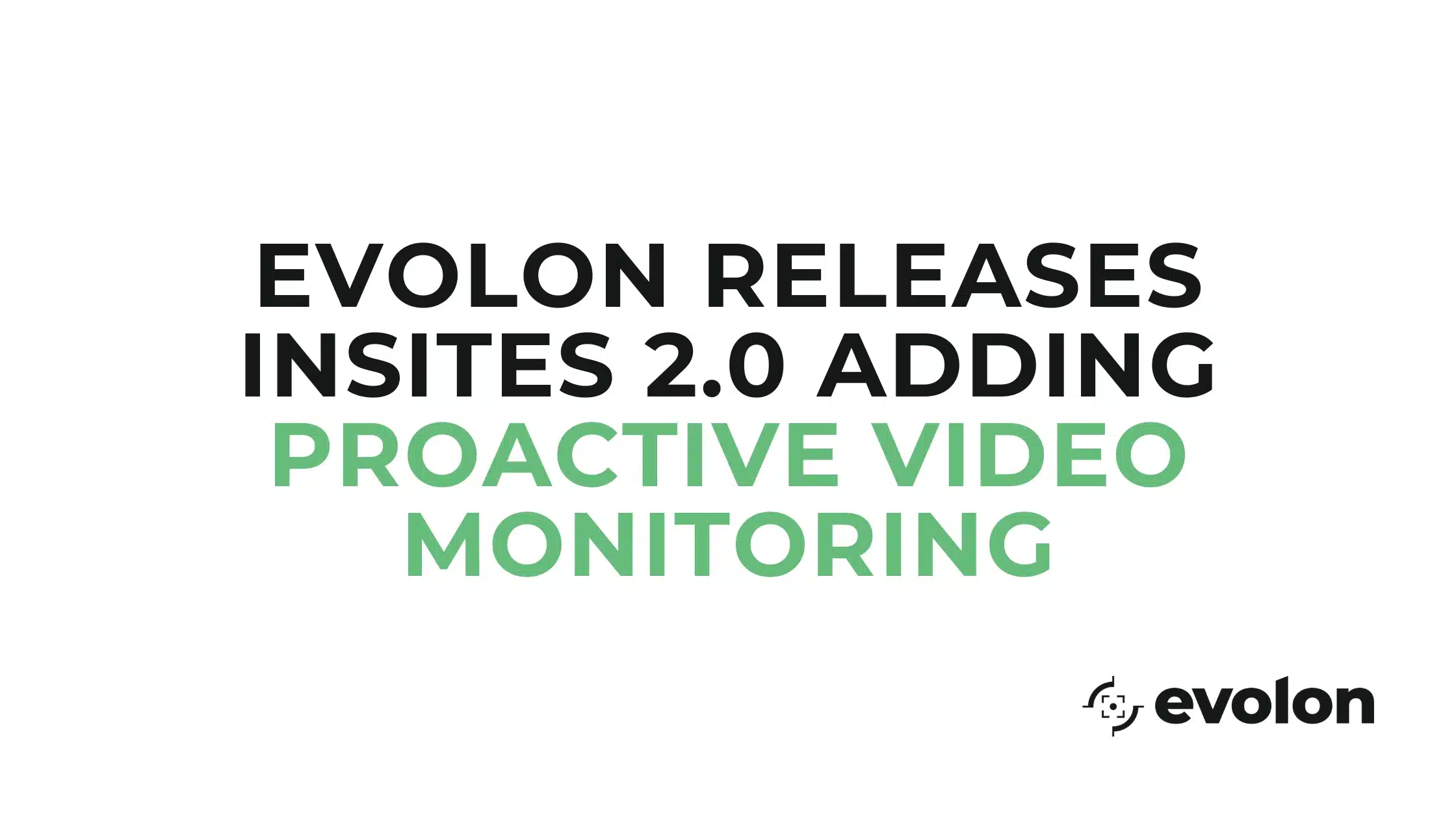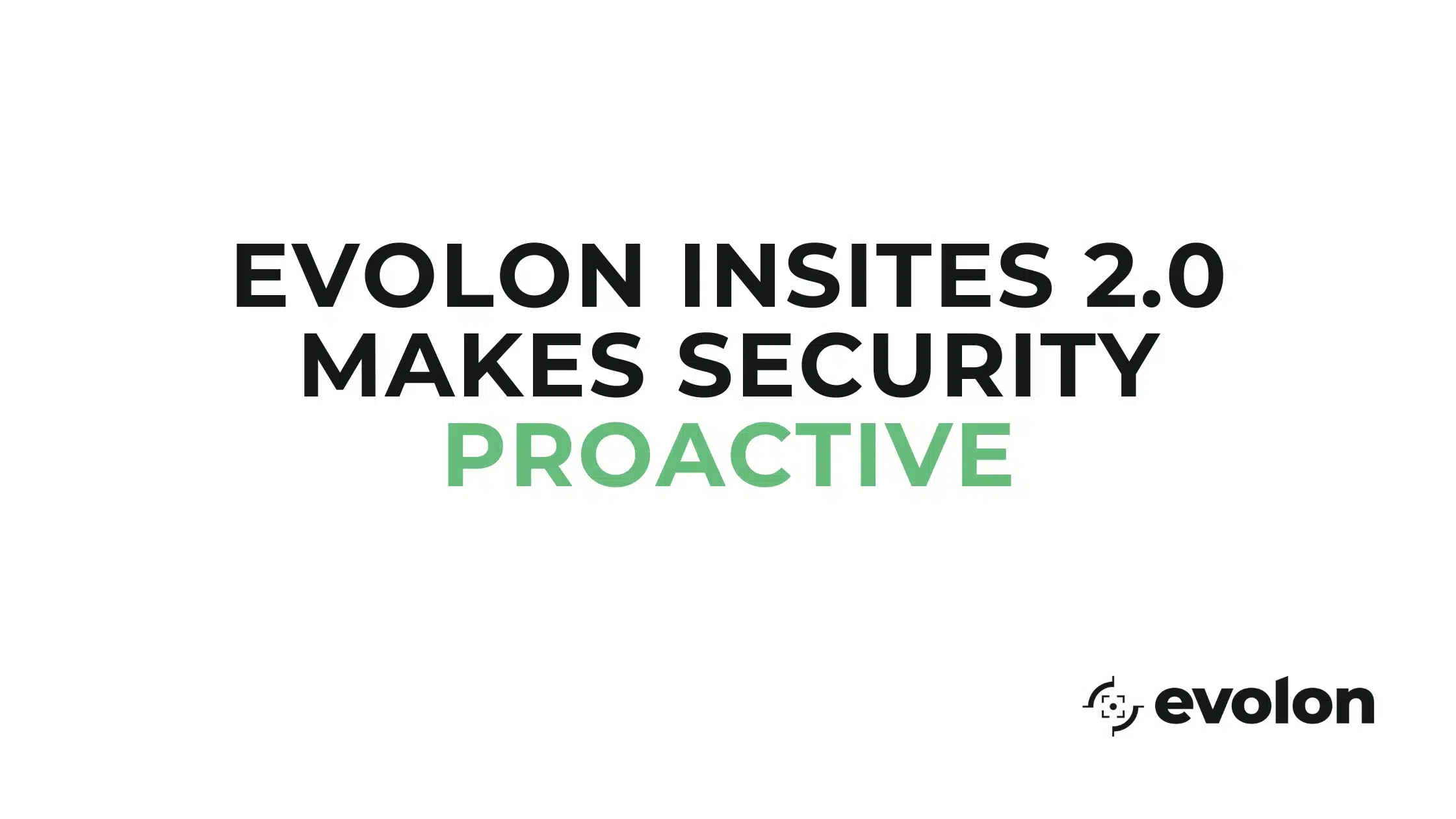
Exploring Video Analytics and Artificial Intelligence
Video analytics has evolved rapidly. At the core, video analytics provides actionable insights to users based on surveillance security system data. While the basic premise of data insights remains, the impact of video analytics has expanded with the addition of Video AI.
By leveraging advancing artificial intelligence models, the analytics capabilities of security systems are evolving. The primary benefit of this evolution is shifting security operations to a proactive stance, staying ahead of threats in real time. Proactive security leads to a safer perimeter, optimized technology utilization, and efficient human capital resource allocation.
Video analytics can also provide insights into your security system and physical facilities. An example of this for the security system is tracking alerts from cameras. Over time the data can show cameras that produce large amounts of false alerts, are positioned incorrectly, or have stopped working correctly, allowing your operations team to take action. For the physical facility, identifying which camera scenes have high alert rates and threats can locate an area requiring additional attention or resource allocation for a secure perimeter.
Let’s break down the technologies behind modern video analytics and what makes up video AI.
What is Video AI
Artificial intelligence (AI) is a field that brings together computer science and big datasets to solve problems.
Think of AI as a toolbox filled with different tools. One of these tools is machine learning, which helps computers learn from examples and predict future instances. It’s like teaching a computer to recognize patterns and make decisions based on what it learned. Another tool is computer vision, which allows computers to “see” and understand images and videos like us.
AI algorithms are the building blocks for all of these tools. These are like recipes that tell computers how to think and learn. Scientists and engineers with diverse backgrounds and perspectives create these algorithms. These algorithms can also improve themselves over time, continuously learning and improving at their tasks by analyzing large amounts of data.
Machine Learning
Unlocking Intelligent Surveillance
At the core, machine learning allows computers to learn and make predictions from data without explicit programming from humans. Through machine learning, we enable computers to learn and adapt independently.
In video surveillance, machine learning enables computers to analyze and understand video data. It can identify objects, people, and activities in real time, just like a human security monitoring agent would. Machine learning algorithms can learn patterns and make accurate security predictions by analyzing large amounts of video data.
Machine learning innovates video surveillance, threat detection, and perimeter security in the security industry. It enables intelligent video analytics that automatically detect suspicious activities, such as unauthorized access, unusual behavior, tailgating, and other potential threats. With machine learning, security systems can become more intelligent and proactive in identifying and preventing security breaches.
Machine learning algorithms for video AI typically go through a two-step process: training and inference.
Training involves building the algorithm and allowing it to learn from a large dataset of labeled videos. Careful annotation is done by a human, providing information about what is happening in the scene. This training phase helps the algorithm recognize and categorize various objects and actions.
During training, the datasets used will play a pivotal role in defining the overall success of applied AI in the field. During development, the engineering teams must have access to all kinds of video data to train the models. One common approach is to use standard off-the-shelf video data, which often has ideal lighting, visibility, and scene activity. The reality of a security deployment is quite different. At Evolon, we train our models on over a decade of video data in real-life scenarios with lousy lighting, rain, snow, bugs, bad camera angles, and the works. Access to real-world data allows our training to best match how AI models will be deployed in the field, leading to higher accuracy over time.
After training, the algorithm moves to the inference phase. It can analyze real-time video streams, detecting and alerting specific events or anomalies. These real-time insights can trigger immediate alerts to security personnel and integrate with the overall security solution to enhance safety and response times.
Machine learning in video AI is crucial as it enables proactive threat detection, reduces false alarms, and improves the security team’s overall situational awareness. As technology advances and machine learning evolves, we continue to unlock more sophisticated capabilities that apply to the security industry.
Computer Vision
Enhancing Surveillance and Threat Detection
Computer vision is a technology that enables computers to “see” and understand images and videos as humans do. In the
context of the security industry, computer vision becomes a force multiplier for security teams, greatly enhancing surveillance and threat detection capabilities.
For security applications, computer vision algorithms analyze real-time camera video feeds, instantly recognizing objects, people, and activities. By leveraging advanced image processing techniques, these algorithms detect suspicious behavior, unauthorized access, and potential threats in real-time.
Video monitoring is one area where this innovation has an outsized impact. Previously, you required physical guards or video-monitoring agents to patrol and monitor the perimeter for threats. As a facility and perimeter expanded, the security operations team would need additional guards or monitoring agents to cover the expansive threat area. By integrating computer vision into security operations, a force multiplier effect occurs, allowing one video monitoring agent to act on real-time AI-verified threat alerts in coordination with an efficient physical guard force.
Overall, computer vision is advancing the capabilities of security systems and security operations teams while making our public spaces, businesses, and critical infrastructures safer than ever before.
Video Analytics
Extracting Valuable Insights
Video analytics is a powerful tool to extract meaningful insights and meta-data from video footage. It allows computers to analyze videos, detect patterns, and provide valuable data for applications.
In security, video analytics plays a vital role in enhancing surveillance systems. It can automatically monitor live video feeds, identify objects, track movements, and recognize specific events or behaviors. Video analytics enabled with AI algorithms can detect anomalies, such as intrusions or unusual behaviors, and generate real-time alerts for security personnel.
Beyond security, video analytics finds applications in a broad set of industries. In retail, it enables customer behavior analysis, tracking shopping patterns, and identifying areas of high interest or potential shoplifting. In transportation, video analytics can monitor traffic flow, detect accidents, or track vehicle movements to optimize traffic management. This diverse set of applications for video analytics allows organizations to leverage the technology for security and business operations simultaneously.
Video analytics can also assist in crowd management, helping ensure public safety during events or gatherings. It can estimate crowd sizes, identify crowd density, and detect any unusual or potentially hazardous situations, allowing authorities to take appropriate measures.
Organizations gain valuable insights and can make data-driven decisions. It helps automate processes, improve operational efficiency, and enhance situational awareness. Video analytics acts as a force multiplier, enabling security personnel and businesses to make proactive and informed choices based on visual information.
When video analytics incorporates artificial intelligence like machine learning and computer vision, the system can provide more accurate detection, recognition, classification, and insightful response data.


